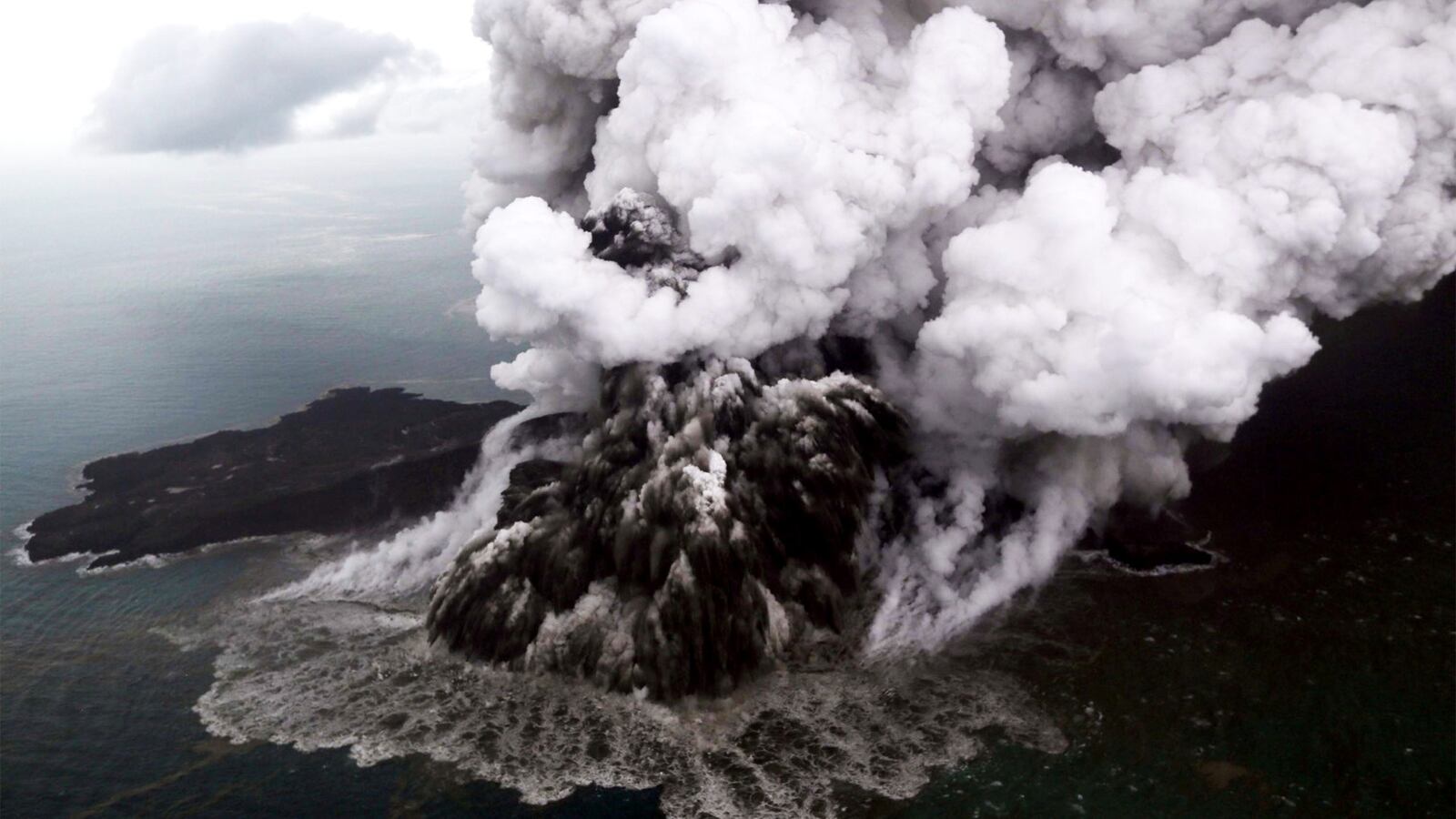The word "Krakatoa" alone conjures atavistic fears. Its eruption in 1883 was a worldwide event as news of the devastation circled the globe by telegraph and the aftereffects changed the weather on the other side of the planet. It seemed to foretell for the first time in modern history how small and vulnerable Earth really is.
The tragedy brought on by seismic activity at the same site in Indonesia on Saturday night is not of the same scale, but is a reminder of how sudden and how vast such destruction can be. More than 280 people are known to have been killed and more than 1,000 injured after a deadly tsunami struck without warning around 9:30 p.m. local time in Indonesia's Sundra Strait, which includes the popular islands of Sumatra and Java. The nearly 10-foot wave is thought to have been caused by an underwater landslide after the eruption of Anak Krakatau, known locally as the “angry child of Krakatoa.”
The deadly wave was caught on dramatic video as it wiped out a pop concert given by the popular local band Seventeen, killing several band members and people in attendance.
The 1883 eruption was an epic event that made "Krakatoa" seem synonymous with cataclysm, if not indeed apocalypse. Edward Munch’s famous painting ‘The Scream” is thought to have been inspired by the blood-red skies it produced in faraway Scandinavia. The blast of 1883 killed 36,000 people and wiped out entire towns and villages. The smaller Anak Krakatau volcanic island developed during the 20th century in the remains of the old, an heir to devastation. And the lessons of Krakatoa are not just something that can be relegated to history.
There are around 20 super volcanoes across the world that could theoretically be even worse than Krakatoa and, conceivably, destroy life on earth as we know it. Smaller eruptions might disrupt air travel; larger ones might cast a pall of permanent winter over the planet.
One of the most famous of these dangerous monsters is Yellowstone in the Wyoming, according to the U.S. Geological Survey. If Yellowstone erupted with a volcanic magnitude of eight, which is the highest possible, it could bury half of the United States.
The largest super volcano is Lake Toba, also in Indonesia, and the smallest is the Phlegraean Fields near the densely populated city of Naples, Italy. Several experts have warned that seismic monster is “waking up,” and volcanologists say an eruption would have a devastating impact on Europe. It would completely destroy the bay of Naples and likely send ash across the continent.
When Krakatoa erupted in 1883, it caused what's known as a volcanic winter, which occurs when a volcanic ash cloud mixes with sulfuric acid and moisture to obstruct the sun, which impacts plants, animals and humans in untold ways. Krakatoa's eruption caused a drop of around 2.2 degrees Fahrenheit in regional temperatures. The catastrophic eruption was the deadliest natural disaster of the 19th century, causing the loudest noise yet recorded, and sending perceptible shock waves around planet earth seven times, according to the United States Geological Survey.
Closer to ground zero, “Those who weren't killed by the intense heat would have been sandblasted to death,” according to volcanologist Dave Rothery of the Department of Earth Sciences at the Open University.
The eruption of Mt. Tabor in 1815, about 900 kilometers from Krakatoa, may have been 10 times a powerful and has been linked to the year without summer in Europe in 1816 that brought on crop failures and famine.
The United States is vulnerable to such cataclysms as well. Apart from the potential devastation that could be unleashed at Yellowstone, the eruption of Mount St. Helens in 1980 killed 57 people, inflicted more than a billion dollars worth of damage. And FEMA is haunted by the New Madrid, Missouri, catastrophe in the winter of 1811-1812, when the ground liquefied and the Mississippi River flowed backwards.
Multiple studies by FEMA and other government funded agencies trying to prepare for such a catastrophe conclude that tens of thousands of lives and hundreds of billions of dollars could be lost if the New Madrid quakes took place today.
In itself, the relatively small eruption of Anuk Krakatau, which has been increasingly active since June, and subsequent tsunami on Saturday, is unlikely to rank among the deadliest natural disasters in recent years. On December 26, 2004, a powerful earthquake in the Indian Ocean triggered a series of tsunami waves that killed around 228,000 people in 14 countries. The earthquakes that began in Haiti on January 12, 2010, may have killed 316,000 people.
No expert can predict with any certainty when or where the next major volcanic eruption will occur. In fact, there is no imminent danger that any could erupt soon. But there is no guarantee that they won't either.
With additional reporting by Christopher Dickey







